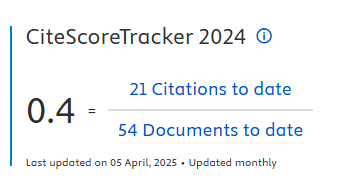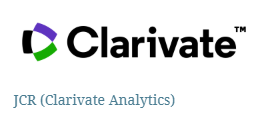Innovation in times of a pandemic: the case of a construction industry
DOI:
https://doi.org/10.5585/2023.21862Keywords:
Covid-19, crisis, small business, innovation radarAbstract
Objective of the study: Highlight the innovations achieved in the pandemic period by a transformation industry that supplies products for civil construction.
Originality/Relevance: Qualitatively describes how innovations are carried out based on the innovation radar in an industry at an adverse time of a pandemic.
Methodology/Approach: It is characterized as a technical, descriptive, qualitative report through content analysis.
Main results: The results showed that the industry was directly affected by the lack of raw material during the pandemic period, and found solutions by innovating, mainly in the dimensions supply, solutions, value addition, organization, supply chain, and processes.
Contribution: As contributions of the study, information related to the business environment aimed at innovation in times of crisis and in the covid-19 world pandemic was pointed out, and the advance in measuring business innovations in a qualitative way using the innovation radar tool.
Downloads
References
Audy, J. (2017). A inovação, o desenvolvimento e o papel da Universidade. Estudos avançados, 31, 75-87.
Bachmann, D. L., & Destefani, J. H. (2008). Metodologia para estimar o grau de inovação nas MPE. XVIII Seminário Nacional de Parques Tecnológicos e Incubadoras de Empresas. Aracaju.
Barbosa, M. T. D. J. (2020). Metodologia para identificação de oportunidades de inovação em serviços dos integradores de sistemas de controle (Doctoral dissertation, Universidade de São Paulo).
Caballero-Morales, S. O. (2021). Innovation as recovery strategy for SMEs in emerging economies during the COVID-19 pandemic. Research in international business and finance, 57, 101396.
Cervo, A. L., & Bervian, P. A. (1983). Tipos de pesquisa.
Cervo AL, Bervian PA. Metodologia científica. São Paulo: Mc Graw-Hill, 53-59.
de Amorim Rodrigues, F., Santarém, S., & de Figueiredo, S. C. G (2020). Engenharia civil: Inovação e Sustentabilidade.
de Carvalho, G. D. G., da Silva, W. V., Póvoa, Â. C. S., & de Carvalho, H. G. (2015). Radar da inovação como ferramenta para o alcance de vantagem competitiva para micro e pequenas empresas. RAI Revista de Administração e Inovação, 12(4), 162-186.
de Carvalho, G. D. G., de Resende, L. M. M., de Carvalho, H. G., Pontes, J., & Correa, R. O. (2020). The local innovation agents program: a literature review on the largest Brazilian small business innovation support program. International Journal of Innovation Science. de Freitas Guedes, R. E. F., & Moutinho, L. M. G. Mensuração do Grau de Inovação em Arranjo Produtivo Local: Um Estudo em Empreendimentos Confeccionistas de Santa Cruz do Capibaribe-PE. Enampad 2020.
de Oliveira, M. R. G., Cavalcanti, A. M., de Paiva Júnior, F. G., & Marques, D. B. (2014). Mensurando a inovação por meio do grau de inovação setorial e do característico setorial de inovação. RAI Revista de Administração e Inovação, 11(1), 114-137.
de Oslo, M. (2006). Diretrizes para coleta e interpretação de dados sobre inovação, 3ª Edição. Publicação conjunta de OCDE e Eurostat.
Escobar, M. A. R., de Araujo, G. F., da Silva Florêncio, M. N., & Escobar, A. G. (2021). Inovação e as pequenas empresas de carrocerias: o caso da capital nacional do caminhão. Revista Interdisciplinar Científica Aplicada, 15(2), 36-50.
Fretty, P. (2020). Tale of COVID-19: Crisis Inspiring Innovations. Retrieved 08.10.2020, from: https://www.industryweek.com/technology-and-iiot/media-gallery/21126839/tale-ofcovid19-crisis-inspiring-innovations.
Gamil, Y., & Alhagar, A. (2020). TheImpactof Pandemic Crisis on the Survival of Construction
Industry: A Caseof COVID-19. Mediterranean Journal of Social Sciences, 11(4), 122-122.
Gopalakrishnan, S., & Kovoor-Misra, S. (2021). Understanding the impact of the Covid-19 pandemic through the lens of innovation. BRQ Business Research Quarterly, 23409444211013357.
Guderian, C. C., Bican, P. M., Riar, F. J., & Chattopadhyay, S. (2021). Innovation management in crisis: patent analytics as a response to the COVID‐19 pandemic. R&D Management, 51(2), 223-239.
Heinonen, K., & Strandvik, T. (2021). Reframing service innovation: COVID-19 as a catalyst for imposed service innovation. Journal of Service Management, 32(1). https://doi.org/10.1108/JOSM-05-2020-0161.
Leppäaho, T., & Ritala, P. (2021). Surviving the coronavirus pandemic and beyond: Unlocking family firms’ innovation potential across crises. Journal of Family Business Strategy, 100440.
Lima, G. M., Silva, S. B., da Silva, W. S., & Henrique, M. R. (2021). Radar Da Inovação Como Vantagem Competitiva: Um Estudo De Caso. Brazilian Journal of Development, 7(5), 47200-47222.
Marques, K. F. S., Siluk, J. C. M., Júnior, A. L. N., & Cattelan, V. D. (2014). O Diagnóstico da inovação de uma empresa portuguesa em tempos de crise. REVISTA GEINTEC-GESTAO INOVACAO E TECNOLOGIAS, 4(3), 1270-1282.
Martins, V. W. B., Neves, R. M. D., & Macêdo, A. N. (2014). Análise do desenvolvimento de competências gerenciais na construção civil através do modelo da Aprendizagem Baseada em Problemas adaptado ao contexto organizacional. Ambiente Construído, 14, 155-175.
Ministério da saúde (2021, julho 15). Painel Coronavirus. Recuperado em julho 15, 2021, em https://covid.saude.gov.br/.
Oliveira, M. R. G. D., Cavalcanti, A. M., Brito Filho, J. P. D., Torres, D. B., & Matos, S. M. (2011). Grau de Inovação Setorial: Uma abordagem a partir do Radar de Inovação. Encontro Nacional de Engenharia de Produção, 31, 1-13.
Portal da indústria (2021, julho 10). Entenda a economia do Brasil, seu contexto, atualidades e perspectiva. Recuperado e, julho 10, 2021, em http://www.portaldaindustria.com.br/industria-de-a-z/economia/.
Sawhney, M., Wolcott, R. C., & Arroniz, I. (2006). The 12 different ways for companies to innovate. MIT Sloan management review, 47(3), 75.
Silva Néto, A. T. D. (2012). Mensuração do grau de inovação em micro e pequenas empresas do estado de Sergipe.
Silva, G., & Dacorso, A. L. R. (2013). Perspectivas de inovação na micro e pequena empresa. Revista Economia & Gestão, 13(33), 90-107.
Paredes, B. J. B., Santana, G. A., & de Albuquerque Fell, A. F. (2014). Um estudo de aplicação do radar da inovação: o grau de inovação organizacional em uma empresa de pequeno porte do setor metalmecânico. Navus-Revista de Gestão e Tecnologia, 4(1), 76-88.
SEBRAE. Gestão da Inovação – Inovar para Competir. Manual do Participante. Programa SEBRAE Mais. Brasília, 2010.
Yin, R. K. (2015). Estudo de Caso-: Planejamento e métodos. Bookman editora.
Downloads
Published
How to Cite
Issue
Section
License
Copyright (c) 2023 Michelli Julhian Abegg Ceolin, Fernando Damke, Elizandra da Silva, Ronaldo Bulhões, Marcelo Roger Meneghatti

This work is licensed under a Creative Commons Attribution-NonCommercial-ShareAlike 4.0 International License.
- Abstract 610
- PDF 364
- PDF (Português (Brasil)) 303













